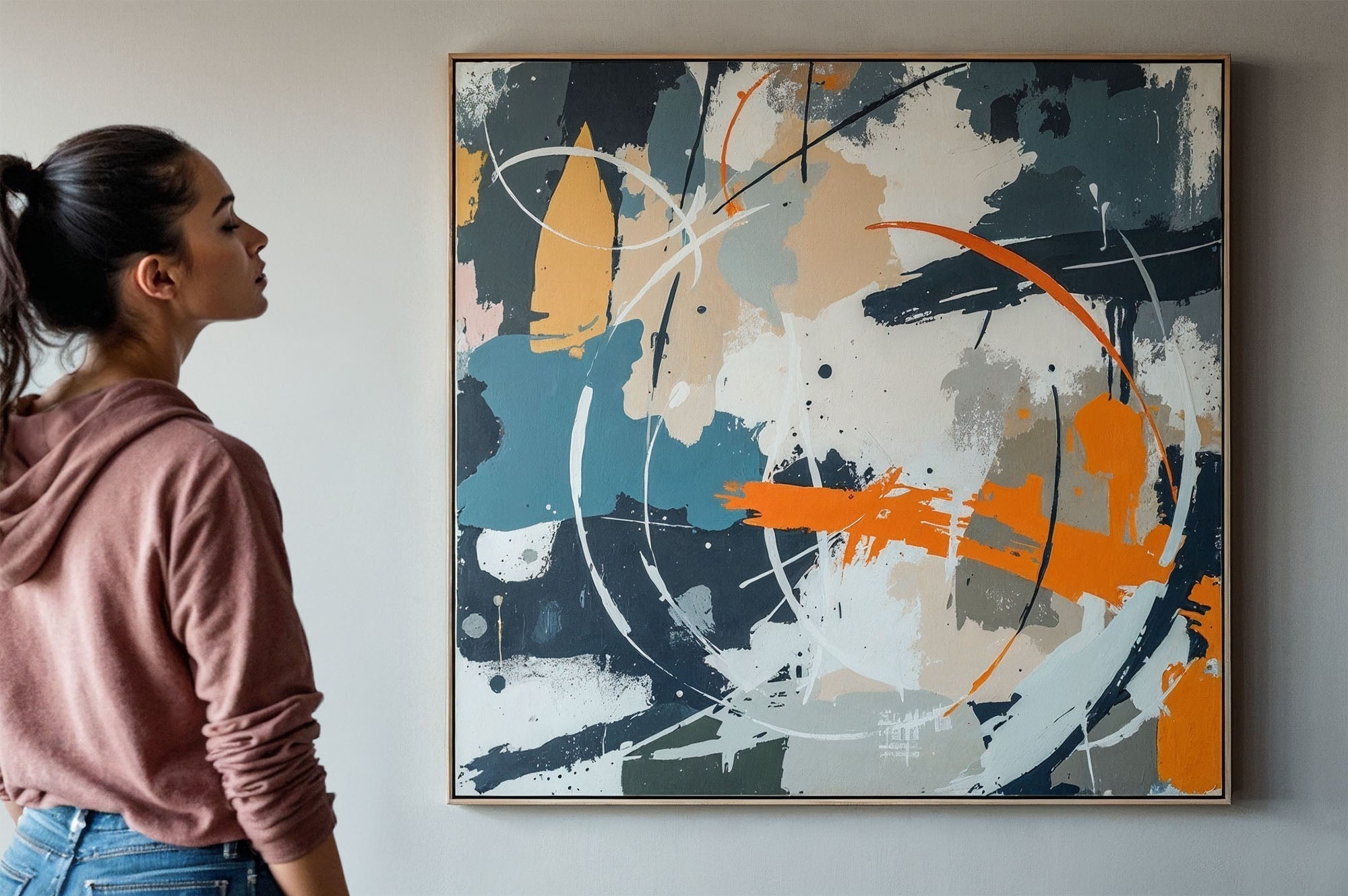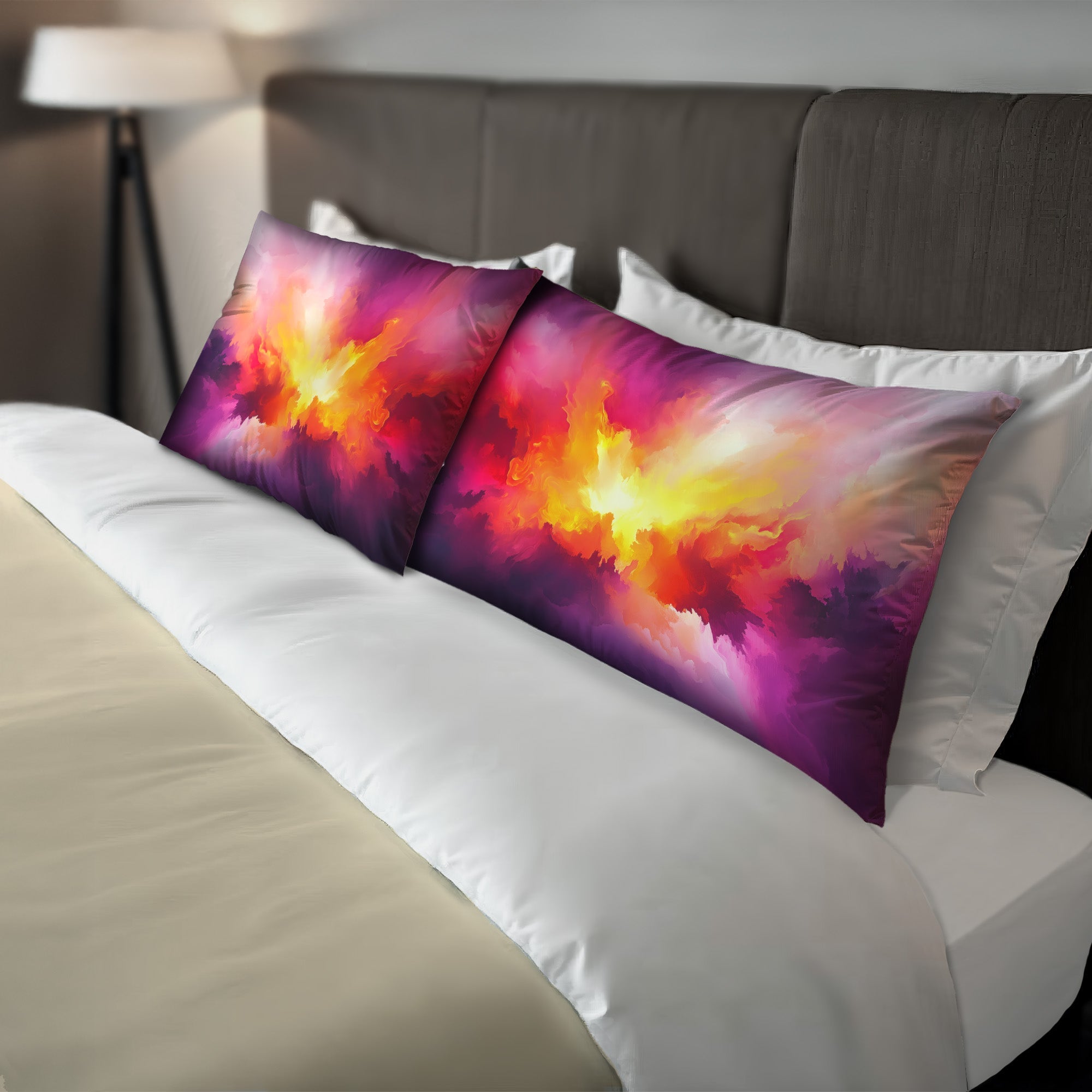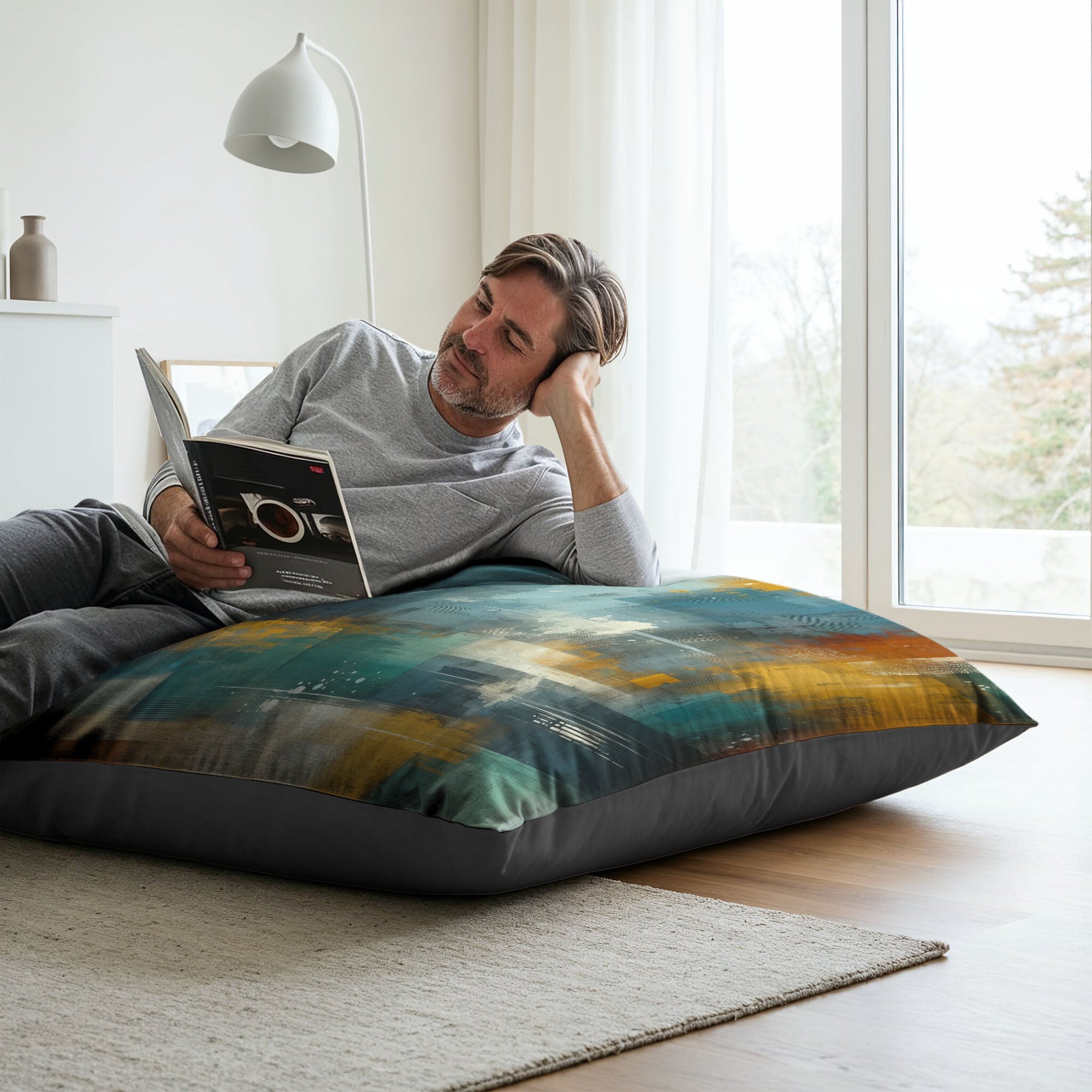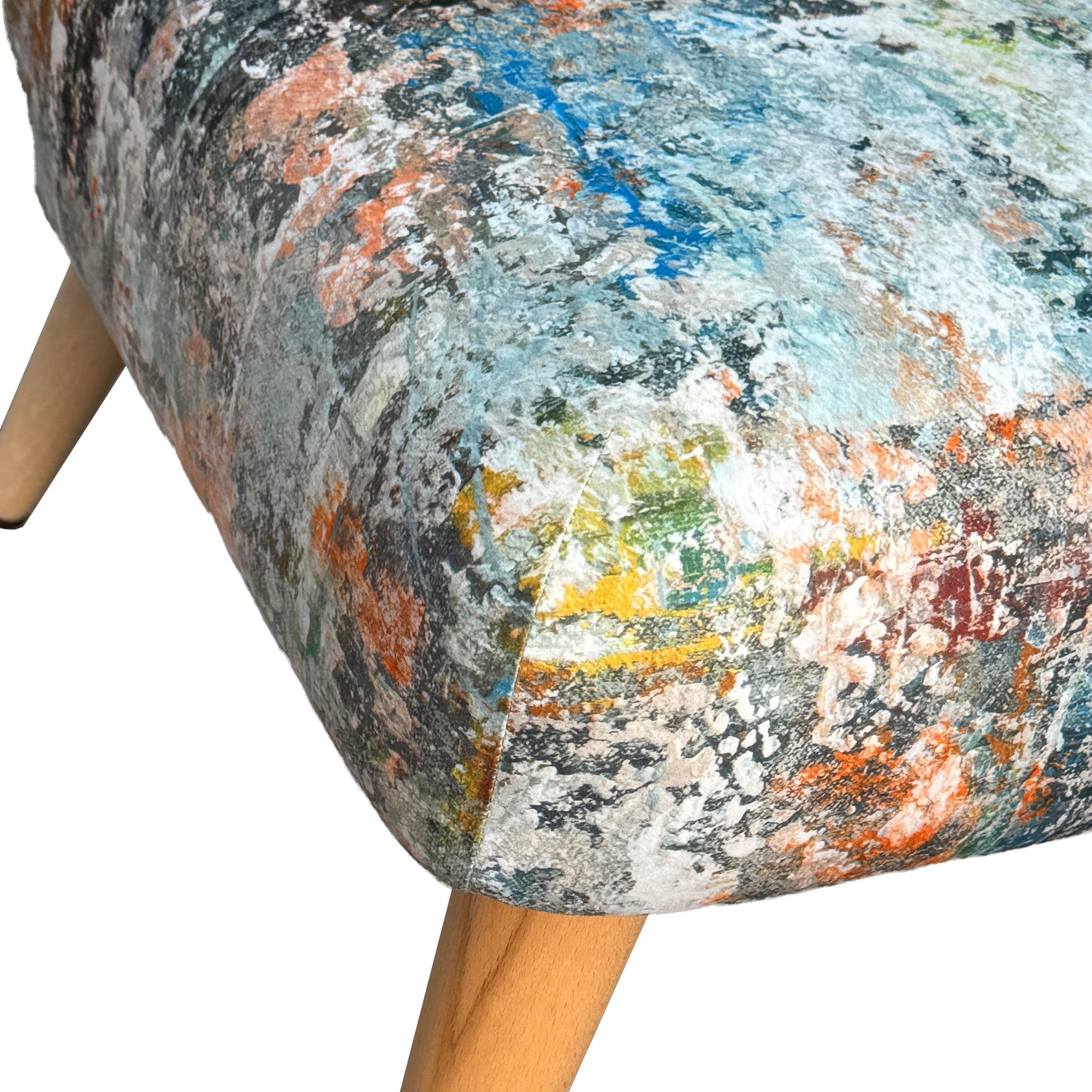Buying art can feel oddly intimidating, especially when it's your first piece. It’s one of those things everyone tells you should be instinctive, yet the moment you start looking, your confidence evaporates. You start second-guessing yourself, and because art has a reputation for snobbery, many people give up before they even begin.
But the truth is, you don’t need permission to buy what you love. If something draws you in, makes you stop scrolling, or pulls you across a room, that’s all the expertise you need.
Taste isn’t a qualification, it’s an instinct. But there’s more to choosing a piece of art than going with your gut. It’s personal, emotional, and yes, sometimes a little egotistical. And that’s part of what makes it so interesting.
The ego bit (and why it’s perfectly okay)
Part of buying art is about how it makes you look. Yes, you're choosing something to hang on a wall, but you’re also making a statement about what you value. And that’s just human nature.
We use art the same way we use clothes, music, or even language — to express who we are, or who we’d like to be. The only trap is buying for the wrong audience, and the moment you start worrying about what your family or friends will think, you lose the connection that made the piece special in the first place.
At the very least, if a piece of art still makes you smile every time you walk past it, that’s really the only thing that counts.
Why people freeze at the idea of buying art
For many people, the hardest part of buying art isn’t finding what they like, it’s trusting that liking it is enough to part company with their hard-earned cash — and the fear of getting it wrong runs deep. We’ve been conditioned to believe that taste is a skill rather than a feeling.
Our brains make emotional decisions about what appeals to us in a second or two. Some even say it’s within a tenth of a second. But that instant spark of attraction, whether it’s to a painting, a pattern, or a person, is almost always genuine. Everything after that is just rationalisation.
So if a piece keeps catching your eye, take note of that reaction. It’s not coincidence; it’s your brain recognising something it connects with on a subconscious level. Maybe that's your "gut feeling." Who knows?
The rules that don’t matter
Let’s dismantle a few myths while we’re here.
Matching your décor: Your décor will change, but art is a moment captured in time and doesn’t need to blend in. Art is its own exquisite piece of self-contained décor.
It's a long game: Don’t overthink whether you’ll still like it in ten years. Taste evolves, and that’s fine, but the art you choose today tells the story of who you are now.
Other people’s opinions: Art lives for the opinions it creates. There's no good, bad, right, or wrong. Art just is what it is, so let people have their opinions and enjoy how your art is making them feel. An opinion is a perspective, not a judgement.
The point is, most of the so-called “rules” about buying art exist to make people feel safe, not happy. And the reality is, you’re buying it for you to love.
The things that actually matter
Some decisions about buying art do make a difference, but none of them should overshadow your emotional response.
Scale
Art nearly always looks smaller in a gallery or online than it does at home, and that's primarily because photographing art in the context of a room is challenging. If you want the art to fill the photo, you lose all sense of how it feels in a room and how it lives in relation to other objects such as furniture or a fireplace. But photographing a room requires a wider-angle shot that can easily make the art disappear.
Bigger pieces are generally more engaging and more impactful. As long as you’re not swamping a space, going larger than you first thought will be hugely rewarding. Big pieces add confidence; small ones add intimacy, and when placed together, they form a unique partnership — the effect can be truly powerful.
Light
Your home is not like a gallery with controlled, consistent lighting, so accept the fact that light changes throughout the day — all day, every day. Sunshine and clouds, morning and evening, natural light and artificial light will all impact how your piece looks. Instead of fighting against a large window, embrace it and watch how light dances across your art, changing its mood throughout the day.
Framing
Frameless canvases can be a statement in their own right; there’s something natural and raw about seeing the often unfinished edge. But mount the canvas in a floating frame and it comes alive.
Frames are there to support and define your art, not compete with it. There was a time, of course, when frames were big, bold, hand-carved, often adorned with gold. They were masterpieces in their own right. Nowadays, and especially where space is limited, smaller, more subtle framing defines the space the art occupies, standing back and allowing it to take centre stage.
Budget
Spend within your comfort zone, not to impress. But remember that art with depth and meaning is, at any price point, an investment in joy.
Buying art is true heart-over-head thinking: emotions first, logistics second. The balance you’re looking for is a felt connection with a touch of practicality.
Training your eye
Education will always increase confidence in almost any walk of life. But exposure is an education in itself. The more art you look at - whether it’s online, in galleries, in hotel lobbies, anywhere - the more you’ll understand what moves you, what lights you up, and what makes you smile.
The more you look, the more you’ll start to notice the colours and shapes that draw you in, the pieces that calm you versus those that energise you. Does abstract art light up your brain, or do landscapes or still life draw you in? Spending time just looking is how taste forms; gradually, quietly, through repetition and attention.
The goal isn’t to become an art expert. It’s to become fluent in your own visual language and trust what floats your boat.
The moment of decision
Every art purchase has its wobble point - that split second where excitement and anticipation turn to doubt. What if it doesn’t look right? It’s too big or too small? What will others say? What if I regret it? That’s fear talking, not instinct.
In reality, if you get to the point where you know what you want and you’re pretty sure you’re going to buy it - but then you don’t - you’ll very likely remember those pieces longer than the ones you did. Most collectors say their biggest regrets are the artworks they walked away from when they instinctively knew at the time they should have bought them. And in any case, who wants to pass up an opportunity for continued joy?
If you can afford it, and it moves you, take the leap. You’ll find the space, you’ll smile every time you see it, and you’ll probably end up wondering why you ever hesitated.
A final thought: Own it
Regardless of what some might want you to believe, art is not a test of sophistication; it’s an expression of personal connection. In fact, it’s just an expression - of you.
We buy what we love, whether it’s cars, clothes, music, or houses. You’ve been doing it all your life with the things you really want and know you’re going to love, and mostly you don’t hesitate. Why? Because it feels right.
So, keep that in mind when you’re considering buying a piece of art. Trust yourself. Ignore the noise. And when something catches your breath, don’t ask permission, just own it.

















